Kayaking can be a fun and relaxing way to spend an afternoon. It’s an excellent way to spend time with friends and family, or even just enjoy some alone time out on the water. Kayaking can help you explore nature while getting a little exercise at the same time.
Before taking to the water, make sure you have all the necessary safety gear like life jackets, paddles, and a whistle. It’s important to stay aware of your surroundings and keep an eye out for any potential hazards like debris, alligators, shallow water, or other boats nearby.
Our today’s blog post is all about “Do alligators attack kayaks?”. So, before you hop into the kayak and venture out, it is important to understand if alligators pose any threat. Read on to find out.
Contents
Contents
What Sets Alligators And Crocodiles Apart- The Difference?
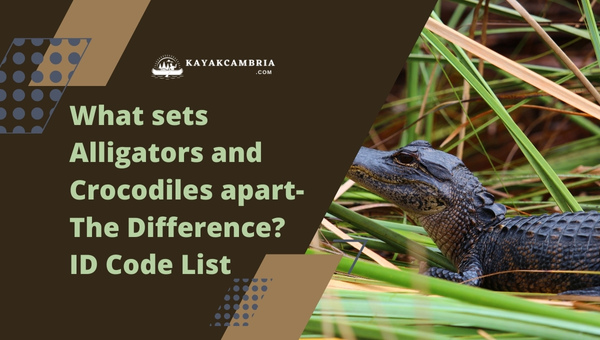
As you may already know, alligators and crocodiles both have a reputation for being formidable predators. Although they look very similar, they belong to two different families: crocodiles are from the family Crocodylidae while alligators belong to the family Alligatoradae. For many people, these reptiles represent the closest thing to dinosaurs that still exist today.
Where Do They Reside?
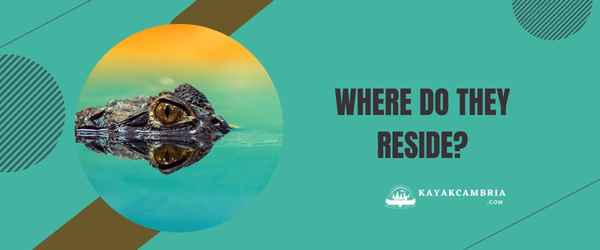
The habitat requirements of alligators and crocodiles differ significantly. You can differentiate between the two by their habitat: alligators prefer freshwater environments, whereas crocodiles can be found in both saltwater and freshwater. In addition, crocodiles are found all across the world including the Americas, Africa, Asia, and Australia; whereas alligators are only found in America.
Notably, the Everglades in Florida is the only place on Earth where both alligators and crocodiles harmoniously inhabit.
Physical Characteristics That Differentiate Crocodiles And Alligators?

The physical differences between alligators and crocodiles are easily distinguishable. Alligators have a U-shaped snout while crocodiles have a V-shaped snout. In addition, the color of alligators is usually a darker blackish-grey compared to the lighter olive green or brown color of most species of crocodiles. Alligators can grow up to 11-15 feet in length, while most species of crocodiles are capable of growing up to 15 or even 17 feet.
What Behaviors Are Commonly Seen In Alligators?
Alligators are predatory reptiles that possess sharp teeth and unexpected agility. Despite their fierce reputation, alligators are quite lazy creatures who spend most of their time lounging in the sun or cooling down in the water. With brains the size of half a tablespoon, alligators don’t have the brain capacity to attack just because they feel like it. Instead, they will attack if they see you as a threat or if they are hungry.
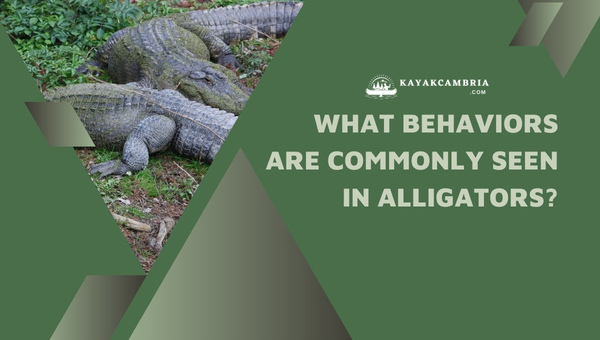
Although the chances of getting attacked by an alligator while kayaking are incredibly low-one 3.2 million to be exact- it is important to stay aware of your surroundings and take safety precautions when kayaking in alligator-inhabited waters.
By following these tips, you can rest easy knowing that kayaking in alligator-filled waters won’t be a daunting or dangerous experience.
At What Times Are Alligators Particularly Aggressive?
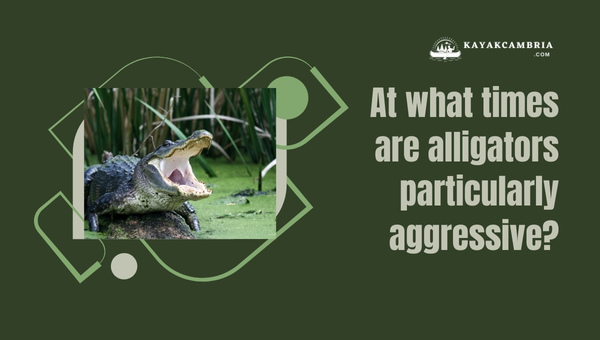
Alligators are most active during the warmer months of the year, and they tend to become more aggressive as spring approaches. During this time, alligators may be more likely to attack kayakers due to their increased hunger and nesting behavior.
Alligators are especially prone to act aggressively twice a year, so it’s important to be extra mindful of that during these times. The behavior of alligators in the main two seasons, when they get aggressive, are:
1. During The Mating Season
The alligator’s mating season kicks off at the start of spring, typically in March, and can last until the end of June. During the mating season, adult male alligators experience a rush in hormones that compels them to search for potential partners, making them particularly aggressive. Males will do whatever it takes to garner the attention of a female and protect their territory, aggressively standing up for themselves if necessary.
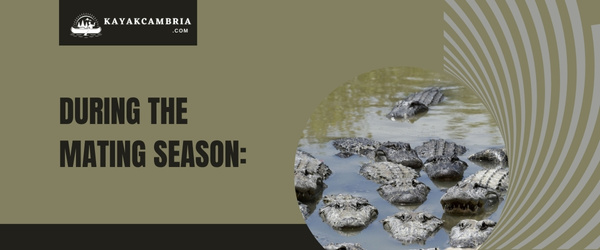
If you happen to be kayaking during the mating season and hear splashes of water nearby, it could mean two alligators are battling each other. Be extra cautious in these cases as they may not recognize your presence. It is essential to keep a safe distance from these alligators, for you never know when they may become agitated and aggressive.
To ensure your safety, if you find yourself in the middle of an alligator attack while in its natural habitat, paddle away quickly and discreetly. Interfering with such occurrences is always detrimental to both parties involved; thus it should be avoided at all costs.
2. During the Nesting Season
Kayaking during the nesting season comes with additional safety risks due to female alligators being particularly territorial. Female alligators construct a mound composed of branches, wood, and leaves that can be found in the water or underneath low-hanging trees.
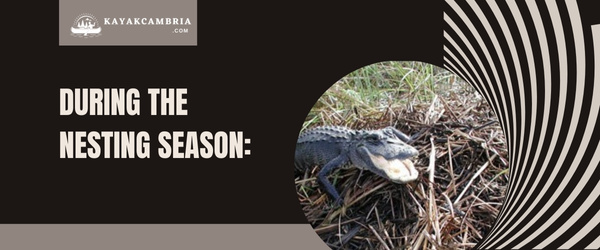
These structures may also settle on the bank of a body of water – some have even been discovered floating. During nesting season, it is essential to remember that young alligators will always be present in their nests when kayaking. Even if an alligator isn’t visible, never get close to a nest as the mother is likely watching nearby.
During their 65-day incubation period, female alligators are highly vigilant of their eggs, and will not hesitate to attack anything that might appear as a threat – including creatures or kayakers. For this reason, it is essential to keep a safe distance from alligator nests and never get too close.
At What Times Are Alligators Particularly Active?

Alligators tend to be most active during the hours between dusk and dawn and tend to be less active during the day. Alligators are cold-blooded creatures and need to cool down by sinking into the water or warm up by lying on the banks of a body of water and soaking up the sun.
When you go kayaking in alligator territory, you might witness them slide into the water really close to your boat. To gators, humans are every bit as threatening as they seem to us and thus it is important to remain conscious of your surroundings when kayaking in gator territory. It is essential to keep a safe distance from alligators, for you never know when they may become agitated and aggressive.
Be Aware Of The Warning Signs
It is essential to recognize the signs of alligator aggression and take them seriously. Alligators will usually give off warning signals prior to attacking. When they feel threatened or cornered, they firstly may retreat into the water, however, if they are feeling particularly defensive and brave they may display warning signs that include hissing and opening their mouths. The warning signs given by an alligator are as:
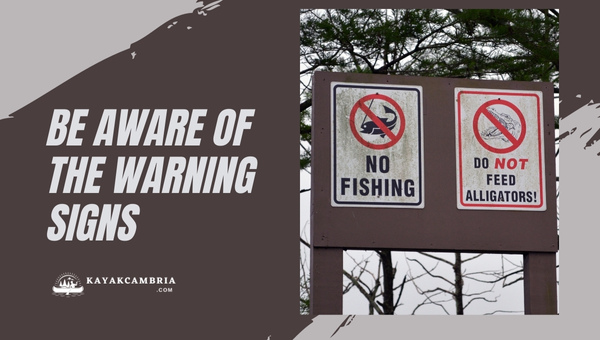
- Sounding a warning with hissing or growling
- Giving you an intimidating stare by opening their mouth wide
- Making threatening movements like snapping their jaws
- Expressing readiness to fight through wagging tails (not in a friendly way)
- Directly facing towards you while turning the head or body.
Do Alligators Attack Kayaks?
Despite the fact that alligators have been known to attack kayaks, this is an uncommon event and usually only occurs when the alligator feels threatened. Alligators typically target smaller animals such as fish or small mammals, but they may become more aggressive toward potential threats during mating and nesting season.
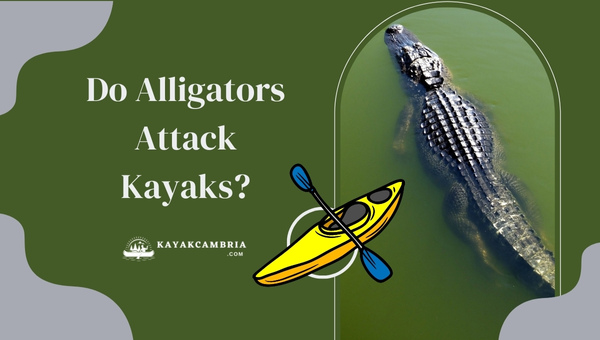
People fishing or accompanied by a dog are especially at risk of being approached by an alligator as the gator may be looking for food. Alligators have been known to kill small-sized dogs due to them resembling their usual prey, so it is important to remain cautious when in or near bodies of water inhabited by alligators.
When kayaking in areas where alligators are present, it is important to stay aware of your surroundings and keep a distance from any gators. It is also important to take note of posted signs that warn of alligator activity. If you see an alligator, do not approach it or try to interact with it in any way. It is best practice to keep a distance between you and the alligators for your safety as well as the safety of the animal.
3 Essential Safety Rules To Follow While Kayaking Through Alligator Territory
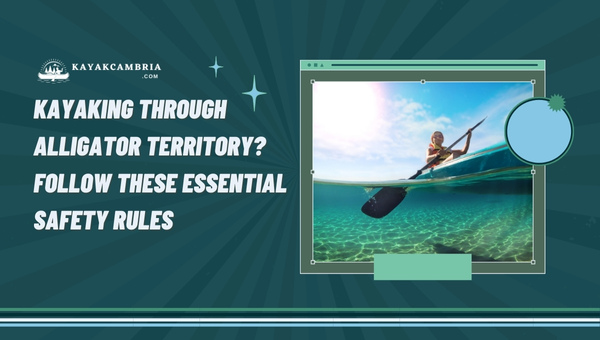
When kayaking in areas populated by alligators, there are a few essential safety rules that should be followed. These include:
1. Don’t Stand In The Alligator’s Way

The alligators need their space to move around and should be given a safe distance of at least 60 feet. If you see an alligator swimming near you, calmly paddle away in the opposite direction so that you do not block its escape route. Usually, alligators will slip into the water when they see humans, but if they feel threatened they may attack. It is important to not put yourself in a situation where this could happen.
2. Avoid Bringing Pets And Little Ones Along

Kayaking can be the ideal family excursion, especially when you bring along your children or friends. Yet, when exploring alligator-filled waters it’s wise to keep your young ones and pets safe by leaving them at home. Even if you are used to kayaking with kids and this isn’t your first trip in alligator territory, it can be a dangerous situation.
Alligators find the sizes of dogs and small children to be ideal for their prey. Gators are more likely to take action if your dog is present – spotting them as an easy and attractive meal. If a gator believes it can successfully catch your pet, it won’t think twice before attacking you in hopes of acquiring the tasty treat.
3. Do Not Feed The Alligators
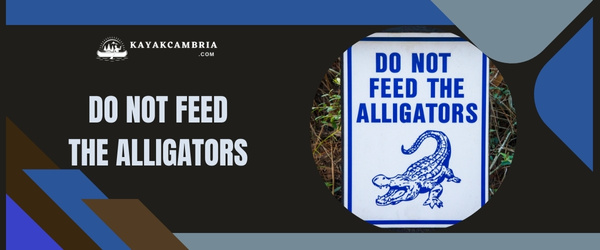
Feeding alligators is not only illegal in most states, but it can also be very dangerous. Alligators are typically afraid of humans, but when they are fed they become less afraid and may even associate people with food. This increases the chances of an attack occurring and makes it more likely that a gator will approach you in search of a meal.
It is not typical behavior for an alligator to come close to you, so if one is doing this it likely believes that humans are a potential source of food. If a gator does attack you due to being fed, then it will likely be put down as it has become accustomed to humans and is no longer fearful of them. To ensure your safety and that the alligators, do not feed the gators.
What To Do If Alligator Attacks Kayak?
Alligators typically view humans as a potential threat and will look to escape the area if they can. However, if an alligator does attack your kayak then there are two possible reasons why the alligator is attacking you: it could be that other people have fed it, and now it’s coming for more food from you, or its aggressive behaviour indicates a territorial attitude.
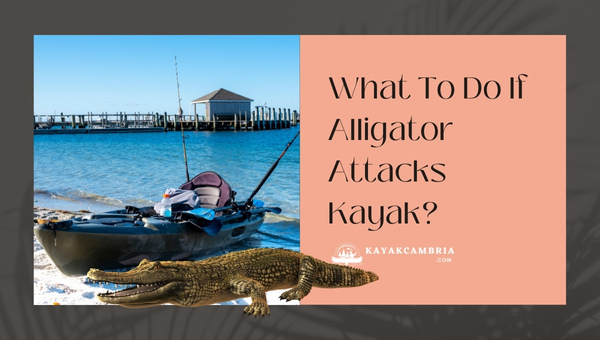
If you see an alligator approaching your kayak, it is important to remain calm and paddle away in the opposite direction. Do not make any sudden movements as this can agitate the animal and potentially lead to an attack. If an alligator continues to come towards you, it’s best to make loud noises with a PFD whistle or air horn or hit the side of the kayak with a paddle as alligators are deterred by loud noises.
If the alligator is persistent, then it is important to get out of the water immediately and make your way back to shore with haste. It is also vital that you remain aware of your surroundings and keep an eye on any signs of alligator activity.
What About Kayak Fishing In Alligator Territory?
Kayak fishing can be dangerous in alligator territory and it is important to take the necessary safety precautions. On the hunt for an effortless meal, alligators remain vigilant with their eyes and ears wide open to detect any fish that may be making a splash on the water’s surface. To remain safe when fishing in alligator-inhabited areas, stay vigilant and employ good sense.

Alligators will be aware that you are on the water and if they see you fishing, they will be closely monitoring your every move, eager to spot any opportunity where they can swoop in and snatch up whatever you’ve just caught. Consequently, it’s not advised to undo your catch over the water since you could draw unwanted attention from a hungry alligator.
Instead, carefully bring your fish inside the kayak and unhook it there for safety purposes. This will reduce the likelihood of gators attempting a daring move over or under your kayak. So, when fishing in alligator territory, make sure to take preemptive steps to prevent any unwanted visitors.
Safeguard Yourself With These Tips
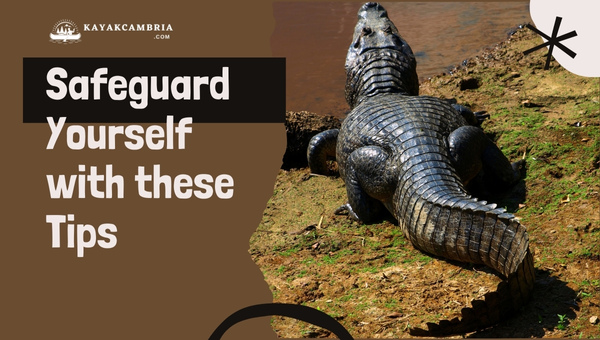
Alligators can be intimidating and dangerous animals. Although it is unlikely for an alligator to attack a kayaker, there are still certain steps to take to protect yourself from potential danger. To stay safe when kayaking in gator-inhabited areas, follow these tips:
1. Always remember: Never, Ever Feed The Alligators
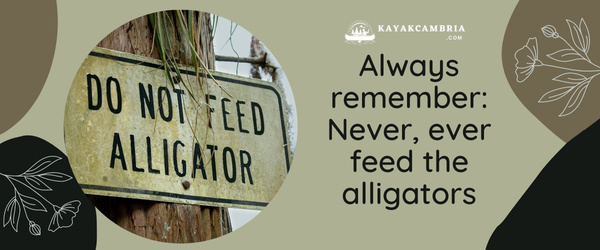
It may seem like a harmless gesture, but feeding alligators is illegal and puts your and other humans’ lives in danger. As a result of their confidence in humans, these animals will no longer be scared and instead become comfortable coming close to people for food and if they do not get food then they may become aggressive.
Hungry wildlife can, unfortunately, make their way into residential areas in search of food, since their ability to hunt effectively will be compromised. So, keep yourself safe and do not feed the alligators.
2. Keep Your Distance From Alligators

The best thing you can do when encountering an alligator while kayaking is to maintain a safe distance and respect their territory. To stay safe, carefully and slowly move through the water rather than rushing towards or away from the alligator.
It is also important to stay in the middle of the river and refrain from getting too close to its edges, as this will give you more room to adjust your direction and minimize the chance of an alligator coming too close. Do not approach them as they can move more quickly in the water than you can paddle away from them. Remain at a safe distance and respect their space for your safety.
3. Stay Far Away from Gator Territory
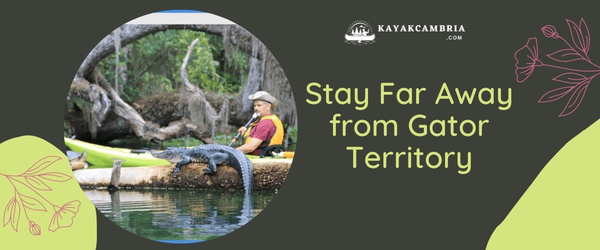
The simplest way to avoid potentially dangerous encounters with alligators is to simply stay away from their territory. To ensure a safe kayaking experience, select areas to paddle that are not populated with alligators thus avoiding any potential risk of attack.
Gators may be just as scared of you as you are of them, so if your first thought is to feel scared about kayaking with gators, it’s best to find alternate destinations for paddling. For a completely safe aquatic adventure, there are many waterways across the region free from alligators, explore and enjoy to your heart’s content.
4. Strictly Avoid Cornering Alligators
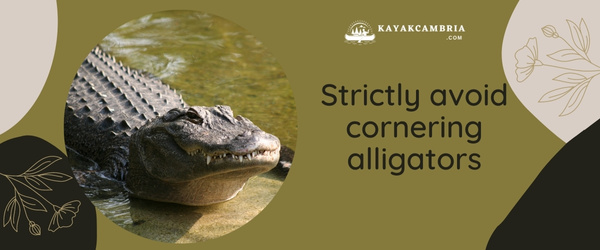
It is important to give gators plenty of room to swim in their environment. If you are kayaking with a group, it’s a good idea to space the kayaks at least 15-20 feet apart so as not to make the alligators feel cornered or threatened. Preferably, try to move in a straight line rather than in a bunch, as you will look more like a parade than a group of hunters.
If the gator feels cornered, it may become aggressive and potentially attack. So, give them some space to live freely as they should.
5. Remain Vigilant During Alligator Mating Season To Ensure Safety
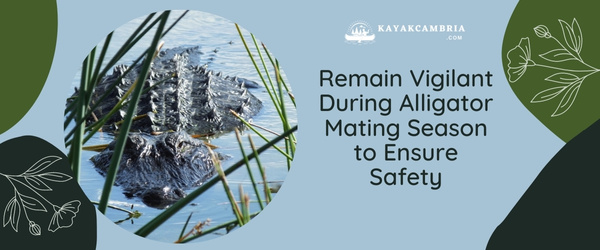
Alligators attack more frequently when they are in their most aggressive state. Adult gators are more aggressive during mating season, which begins at the start of April and ends at the last of June. If you do decide to kayak in gator-inhabited waters during some of the warmer months, remain vigilant and keep an eye out for any potential danger. It is best to avoid alligator waters altogether during mating season for your safety.
6. Avoid Taking Your Dog Kayaking
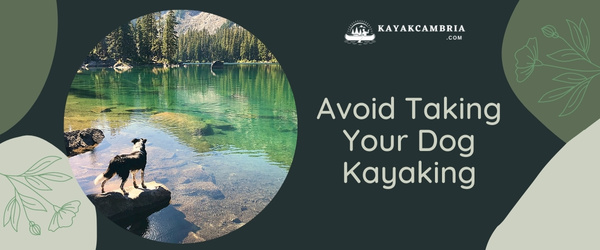
Taking your dog kayaking can be incredibly fun, but it also increases the risk of danger. Dogs closely resemble the size of prey that alligators typically hunt. As a result, they can become easy targets for the alligator. Alligators eat fish, birds, small mammals, and even larger animals like bears.
To ensure your dog’s safety, do not allow them near any lake, pond, or river where there may be alligators present, and never allow them to swim in any body of water where gators are known to live. Doing so can put your pet at risk and potentially lead to a dangerous encounter.
Kayaking with your dog can introduce unexpected dangers, since alligators may be drawn to the smell of your dog and more prone to approach you in search of an effortless snack.
7. Stay Alert For The Hiss Of Danger
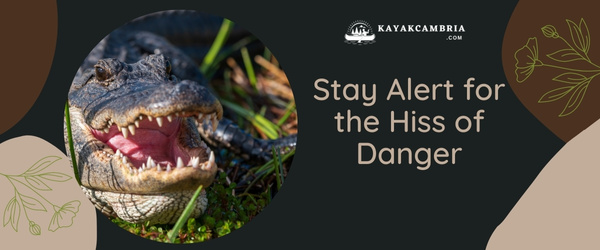
When alligators sense a threat, they will produce a warning sound as a final attempt effort to protect themselves. This sound is called a “hiss” and it is most common in female alligators, who will protect their young and defend them from threats with a loud and recognizable hiss. If you hear this sound, then immediately move back and allow the alligator its space. The hissing sound might be your last warning to ‘back off’ if you are not maintaining a safe distance between your kayak and the alligator.
8. Understand The Signals Of An Alligator’s Body Language

There are also certain body language signals to watch for when kayaking in areas populated by alligators. You should always be aware of the alligator’s movements and their location from your own. One of the most obvious signs of warning is when an alligator hisses.
If you don’t move back while hearing this sound, they will usually produce other warning signs such as bellowing – a loud growling sound used to attack rivals and attract mates. When they do this, their backs cause vibrations in the water that can be felt by kayakers. Additionally, raising their body out of the water is also a warning sign that it’s best to move further away.
9. Make Sure To Always Keep An Air Horn
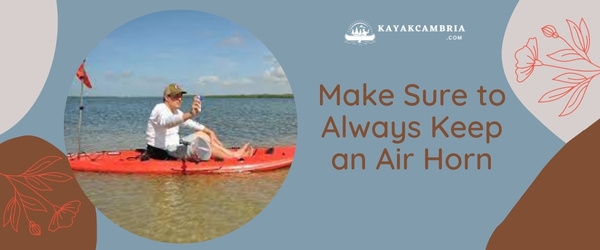
It is important to keep an air horn in your kayak at all times. This may be a legal requirement for kayakers and boaters in some places, but having one on board can save you from being injured or attacked by a gator.
If an alligator does start to approach your kayak aggressively, the loud sound produced by an air horn can scare them off. If you do not have one, then you can also clap your hands, shout or slap the kayak with a paddle to make the alligator feel cornered or threatened.
10. Avoid Swimming With Gators
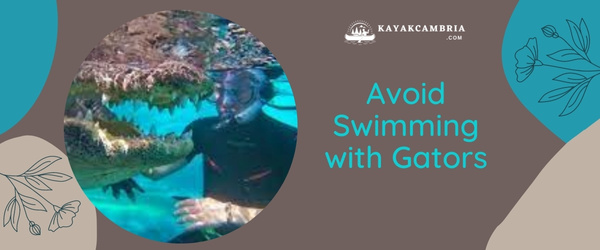
In general, swimming with alligators should be avoided at all costs. Taking a swim in waters filled with alligators is an absolute no-no, so don’t even think about hopping out of your kayak. At any time of the year, swimming at night should be avoided as it increases your likelihood of potential alligator activity. During this period they are more likely to hunt food sources and can pose a danger to swimmers.
If you do spot an alligator, remain cautious and move away slowly. Remember, kayaking in alligator-infested waters can be dangerous, so make sure you take the necessary precautions.
11. Stay Away From Alligator Nests
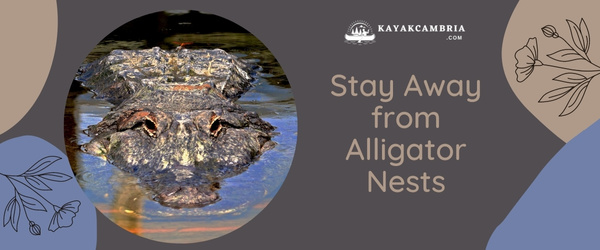
Make sure to avoid alligator nests while kayaking. Female alligators build their nests near the water’s edge, typically situated about 10 feet from its banks. These mounds are often visible to those walking around the area.
When you’re out on the water, it can be difficult to always spot sandbar mounds from a distance, which is why you must remain at least several feet away from shorelines when paddling. If you approach too near a nest, the alligator will probably scare you away. It is therefore important to stay away from the banks when kayaking.
6 Gator-Friendly Kayak Places
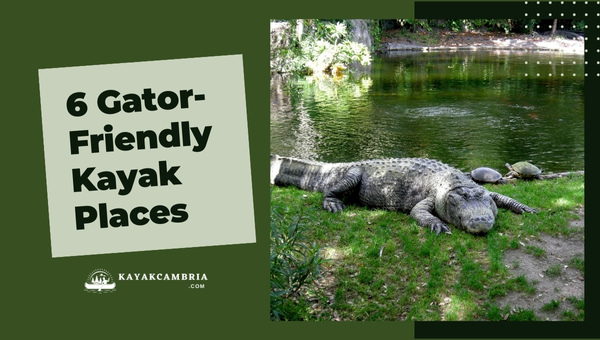
The best way to stay safe while enjoying kayaking in areas populated by alligators is to know where you are going. Here is a list of 5 gator-friendly kayak places:
1. Everglades National Park
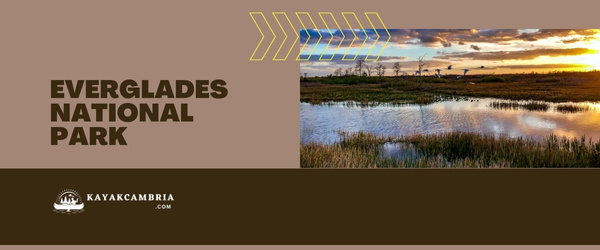
The Everglades National Park is the largest subtropical wilderness in the United States with over 1.5 million acres of wetland preserve, it provides many miles of paddling trails throughout the park and is home to both American alligators and the endangered American crocodile. This gator-friendly spot is perfect for kayaking but remember to remain at a safe distance from the alligators.
2. Congaree National Park

The Congaree National Park in South Carolina is a lesser-known national park, but it offers fantastic paddling opportunities on the Cedar Creek Canoe Trail. This trail winds 15 miles through the park. If you are looking for an alligator-friendly spot to kayak, this is worth checking out! Be
3. Neches River
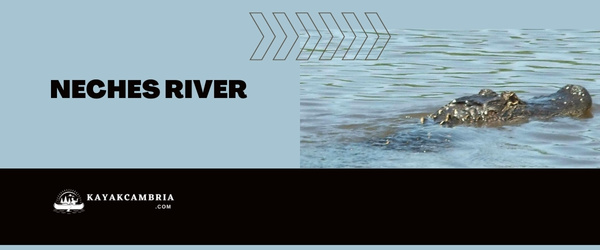
The Neches River in Texas is home to American alligators, making for an exciting and unique kayaking experience. This river offers plenty of opportunities for wildlife viewing and exploration, but make sure you give any wildlife you see the necessary respect by keeping your distance.
4. Atchafalaya Basin Swamp
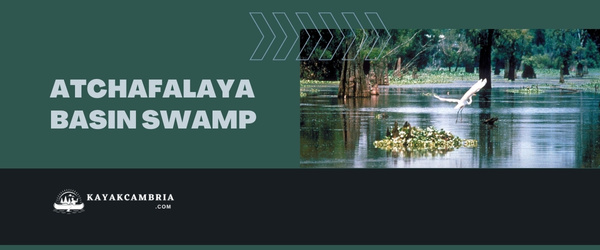
The Atchafalaya Basin Swamp is the largest river swamp in the United States and covers over one million acres. For the adventurous traveler, this is a perfect destination to paddle away and discover the waterways via kayak with an array of experienced tour operators. There is one place to launch your kayak, Lake Martin, but be careful and give the wildlife you encounter the necessary respect.
5. Potano Paddling Trail
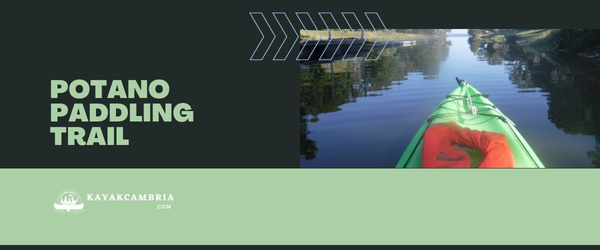
The Potano Paddling Trail is located near Gainesville, Florida, and offers scenic views, wildlife encounters, and miles of paddling paths. This trail is great for beginners with plenty of areas to explore. As always, keep a safe distance from any alligators you see.
6. Okefenokee Swamp

The Okefenokee Swamp in Georgia is home to many alligators and offers 120 miles of paddling trails. This swamp is best accessed through the Suwannee Canal Recreation Area, which provides direct access into the canal and prime alligator habitat. Whether you’re looking for a casual paddle or an unforgettable wildlife experience, the Okefenokee Swamp is the perfect destination.
6 Gators Free Kayak Places
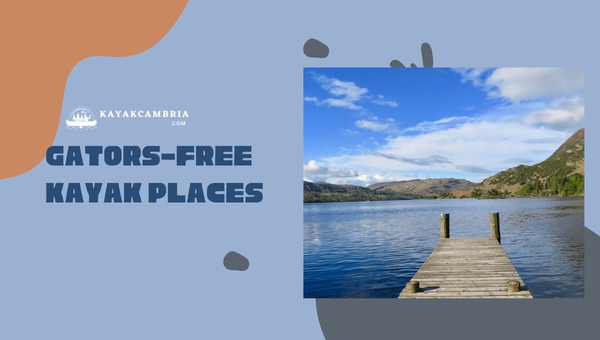
We’ve all heard the horror stories of being out on the water and having an unexpected gator encounter. Fortunately, there are plenty of places where you can enjoy a peaceful kayaking experience without worrying about encountering any gators. Here are some of the top places to enjoy a gator-free kayaking adventure:
1. Lake Tahoe

Located in the Sierra Nevada mountain range, Lake Tahoe is the second-deepest lake in the United States and has some of the cleanest and clearest water on the planet. With its breathtaking views, it’s no wonder why this destination is so popular with kayakers. The paddling season here typically runs from June through September, though late-season expeditions are sometimes possible into October and November.
2. Crater Lake

Famous for being the deepest lake in the United States, Crater Lake is nestled within Oregon’s Crater Lake National Park. Although it’s a beautiful place to kayak and take in all of nature’s beauty, gators are nowhere to be found here.
3. Colorado River
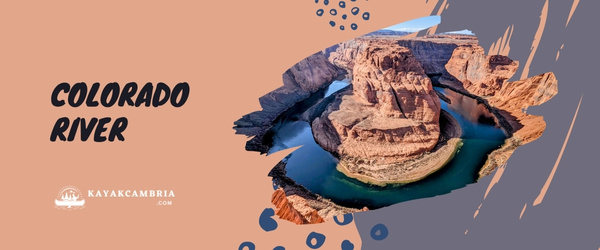
This 1,450-mile river is a great destination for multi-day kayaking expeditions.If you’re looking for the perfect spot to take a leisurely kayaking trip, numerous spots will provide an enjoyable experience, and you’re sure not to run into any gators here. With several sections that are great for recreational or touring kayaks, the Colorado River is an ideal gator-free destination for your next kayaking adventure.
4. Snake River
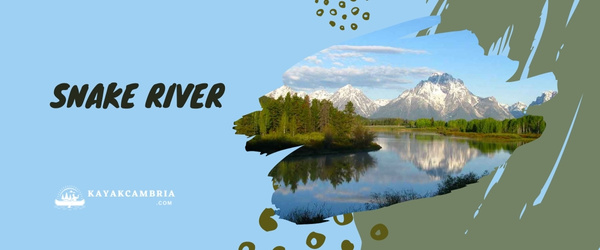
For those looking for a thrilling whitewater experience, the Snake River is one of the best places to go. This 1,078-mile river runs through six states and offers both challenging rapids as well as more peaceful stretches perfect for recreational kayaking. There are plenty of scenic spots along the way where you can pull over and take in the view.
5. Acadia National Park

For those looking for a calmer kayaking experience, Acadia National Park is the perfect place. Located on the Atlantic coast of Maine, this 47,000-acre recreational area flaunts plenty of serene spots to explore by kayak. With its stunning views of the rocky coastline, this destination is sure to leave you with plenty of great memories without any gator sights.
6. Lake Pleasant

Located just outside of Phoenix, Arizona, Lake Pleasant is a great spot for kayakers of all skill levels. With its array of crystal clear coves and diverse wildlife, it offers something for everyone. Plus, there are no gators in sight. So you can kick back and relax as you take in the beautiful views without worrying about any unexpected visitors.
Frequently Asked Questions
1. Is it safe to swim around alligators?
No, it is not safe to swim around alligators. Alligators are apex predators and can be dangerous if they feel threatened. It’s best to avoid swimming in areas where there may be alligators present.
2. What not to do with alligators?
It is important to remember that alligators are wild animals and should never be approached or fed. Alligators will often retreat when they detect potential threats, so it’s important to always keep a safe distance from them.
3. How do you keep alligators away?
The best way to keep alligators away is by avoiding areas where they may be present. Alligators tend to prefer areas with slow-moving water, so it’s best to steer clear of these spots when possible.
4. Can you do fishing in alligator territory?
Fishing in alligator territory can be dangerous and is not recommended. Alligators are known to compete for food sources and may become aggressive if they feel threatened. It’s best to check local regulations before attempting to fish in alligator territory.
Final Words
Kayaking is a great way to explore nature and take in stunning views. While alligators can be found in many areas throughout the United States, there are some spots where you can safely enjoy your kayaking experience without the worry of unwanted visitors. We hope that our article “Do alligators attack kayaks?” has given you the required knowledge on the topic. Always remember to stay safe and have a good time!

